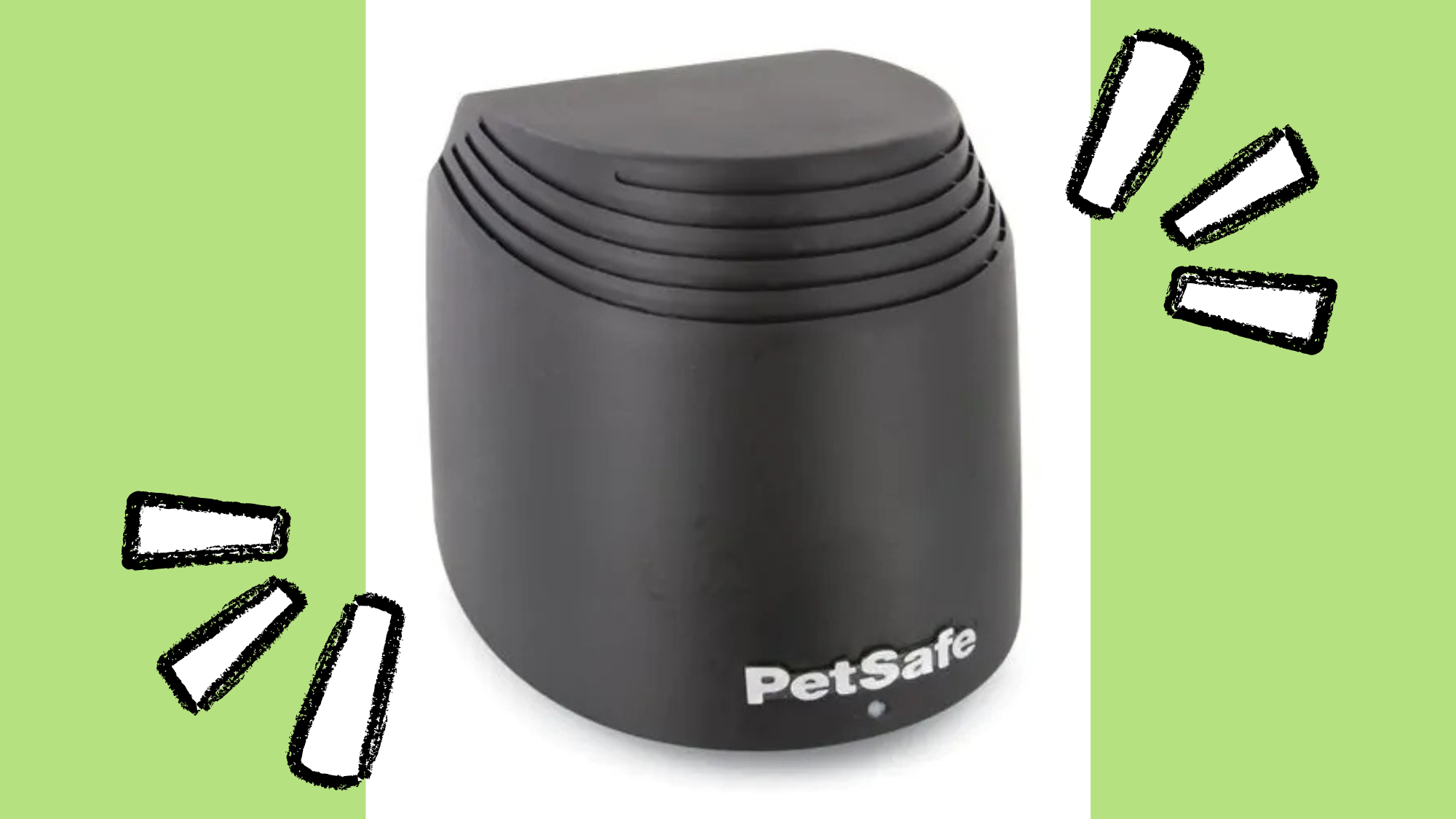| Summary: A non-working PetSafe transmitter may be due to power failures, signal interference, boundary inconsistencies, or internal malfunctions. Troubleshoot by checking the power source, adjusting boundary settings, relocating the transmitter, inspecting cables, and replacing the collar battery. If issues persist, consider replacing or upgrading the transmitter. |
The PetSafe Wireless Fence is a reliable and convenient pet containment system, but like any electronic device, it can sometimes malfunction. If your PetSafe transmitter is not working, you might be dealing with issues such as power failures, signal interference, boundary inconsistencies, or a faulty unit. So, why is my petsafe transmitter not working?
This guide explores the most common problems with PetSafe transmitters, provides troubleshooting steps, and offers practical solutions to get your system back up and running. Find the Top dog collars for Dachshunds that accommodate their long bodies and prevent strain on their necks.
Blog Highlights
TogglePetSafe Transmitter Quick Fix Guide
For major issues, contact PetSafe support.
Understanding How the PetSafe Transmitter Works
Understanding Why Is My PetSafe Transmitter Not Working is important for troubleshooting and fixing issues with your dog containment system. Identifying the cause of the problem ensures your Pet Safe Transmitter works effectively.
What Does the PetSafe Transmitter Do?
✔ Creates an Invisible Boundary – The transmitter sends a radio signal to establish the circular boundary for your pet.
✔ Communicates with the Collar – The collar detects the signal and alerts your pet if they get too close to the boundary.
✔ Allows Boundary Adjustments – You can increase or decrease the radius of the containment area.
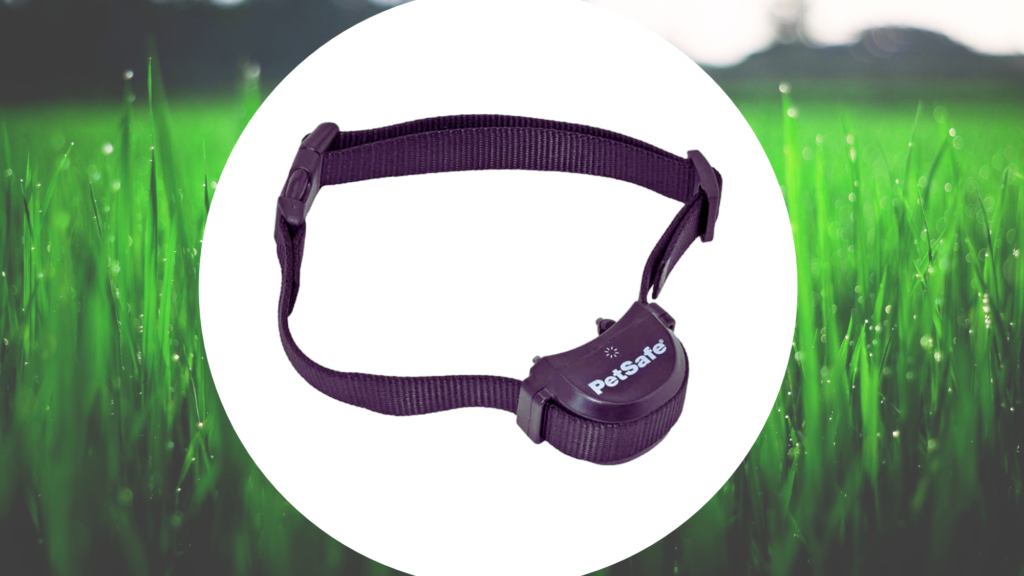
Why Would the Transmitter Stop Working?
Common reasons include:
- Power supply issues (outlet problems, loose cables, or power surges)
- Signal interference (metal objects, thick walls, or electronic devices)
- System malfunctions (damaged transmitter, faulty wiring, or worn-out components)
- Environmental factors (weather conditions, moisture, or overheating)
Get insights into Which is better for Dachshunds: a collar or harness? for their safety, comfort, and health during walks.
Why Is My PetSafe Transmitter Not Working | Common Issues and Troubleshooting Steps
Understanding Why Is My PetSafe Transmitter Not Working can help you identify common issues and take the necessary troubleshooting steps to get your system back on track
1. The Transmitter Won’t Power On
If your PetSafe transmitter isn’t turning on, check these potential causes:
✔ Possible Causes:
- The power outlet is faulty.
- The power adapter or cord is damaged.
- A blown fuse or tripped circuit breaker.
- The transmitter itself has internal damage.
🔧 Solutions:
✔ Check the Power Outlet: Plug another device (like a lamp) into the same outlet to ensure it’s working. If the outlet is dead, reset the circuit breaker or try a different outlet.
✔ Inspect the Power Adapter & Cord: Look for frayed wires, loose connections, or damaged plugs. If faulty, replace the adapter with a PetSafe-compatible one.
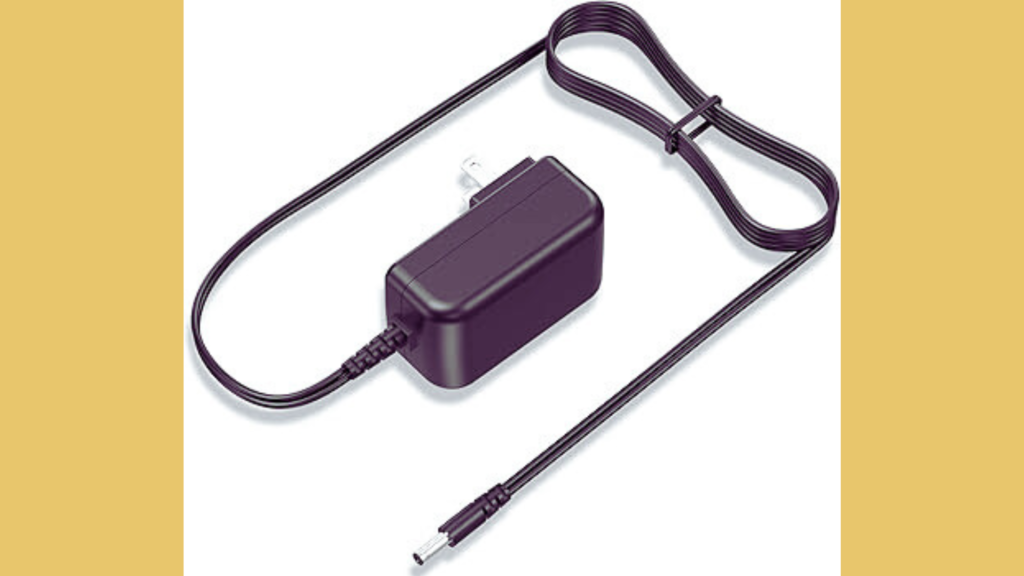
✔ Reset the Transmitter: Unplug the unit for 5 minutes, then plug it back in. This can reset internal components.
✔ Check for Power Surges: If a storm or electrical surge recently occurred, the transmitter may have been damaged. Consider using a surge protector for future protection.
2. The Transmitter is On, But There’s No Signal
If the power light is on, but the system isn’t working, the transmitter may not be sending out a signal.
✔ Possible Causes:
- The boundary control dial is set too low.
- Metal objects are blocking the signal.
- The transmitter is too close to other electronics, causing interference.
🔧 Solutions:
✔ Increase the Boundary Size: Turn the boundary control dial to expand the signal range. Sometimes, the setting may have been accidentally turned down.
✔ Remove Metal Objects Nearby: If the transmitter is placed near large metal objects (appliances, filing cabinets, or metal walls), move it to a different location to improve signal strength.
✔ Relocate the Transmitter: Ensure it’s placed at least 3 feet away from large electronic devices like TVs, routers, or microwaves.
✔ Check the Antenna: Some models have an external antenna. If it’s loose or damaged, it may need replacement.
3. The Boundary is Inconsistent or Unstable
Is your PetSafe fence boundary randomly shifting or not maintaining a steady perimeter? This can be frustrating, as it leads to false corrections or unprotected areas.
✔ Possible Causes:
- Fluctuating radio signals due to interference.
- Changes in the environment, such as weather or new obstacles.
- Low transmitter voltage or power fluctuations.
- A failing transmitter unit.
🔧 Solutions:
✔ Keep the Transmitter Indoors: Weather conditions like rain, snow, or extreme temperatures can affect the transmitter. Ensure it’s in a dry, temperature-controlled area.
✔ Eliminate Signal Interference: If you’ve recently added metal structures (like a new shed or metal fence), they may be distorting the signal. Try adjusting the transmitter’s placement.
✔ Use a Dedicated Power Source: Plug the transmitter directly into a wall outlet instead of an extension cord or power strip, which can cause voltage drops.
✔ Test the Boundary Regularly: Walk around the perimeter with the receiver collar in hand to check for inconsistencies. Adjust the transmitter if needed.
4. The Collar is Not Responding to the Transmitter
If your dog’s collar isn’t beeping or correcting, even when they cross the boundary, the issue may be with the transmitter or the collar itself.
✔ Possible Causes:
- The collar battery is dead or incorrectly installed.
- The transmitter signal isn’t reaching the collar.
- The collar’s contact points are loose or dirty.
🔧 Solutions:
✔ Replace the Collar Battery: If the collar’s light isn’t blinking, install a new battery. Ensure the battery compartment is dry and secure.
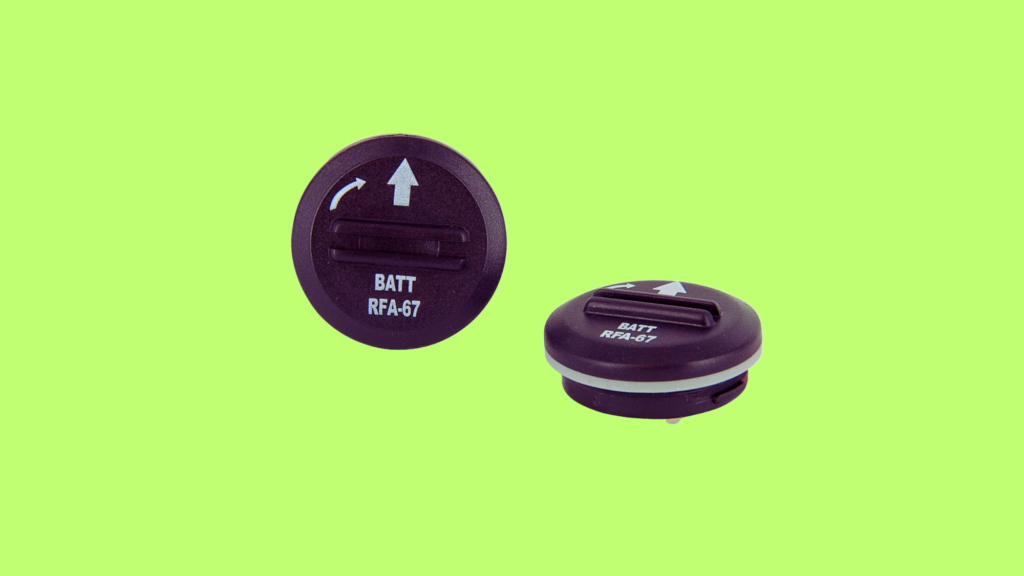
✔ Re-Sync the Collar and Transmitter: Some models require re-pairing if the collar stops receiving the signal. Follow the manufacturer’s instructions to reset the pairing.
✔ Clean the Contact Points: Remove dirt, debris, or moisture from the metal prongs on the collar to ensure a proper connection.
✔ Test with Another Collar: If possible, borrow a working PetSafe collar to see if the issue is with the transmitter or just your pet’s collar.
5. The Transmitter Keeps Beeping or Flashing
If your PetSafe transmitter is beeping continuously or flashing an error light, it’s signaling a problem.
✔ Possible Causes:
- The boundary wire (for wired models) is broken.
- Power supply issues or voltage fluctuations.
- Overheating or internal failure.
🔧 Solutions:
✔ Check for Overheating: If the transmitter is hot, unplug it and let it cool for 30 minutes before restarting.
✔ Reset the Unit: Unplug the transmitter, wait 10 seconds, then plug it back in.
✔ Inspect the Error Codes: Check the PetSafe manual to interpret flashing light patterns or beeping codes. Some common alerts include:
- Fast beeping – Boundary wire break (wired models only).
- Slow beeping – Power issue or signal interference.
✔ Contact PetSafe Support: If you’ve tried everything and the beeping persists, the unit may need professional servicing or replacement.
To discover what activities bring joy to Australian Cattle Dogs, check out this detailed guide on What do Australian Cattle Dogs enjoy?.
How to Prevent Future Issues with Your PetSafe Transmitter
✔ Keep It in a Safe Location: Avoid placing the transmitter near heat sources, water, or electronic devices that could interfere with its signal.
✔ Regularly Check Power Connections: Ensure cables are secure and not frayed.
✔ Test the Boundary Monthly: Walk around with the receiver collar to confirm the system is working correctly.
✔ Replace Batteries on Time: A dead collar battery can cause confusion and lead to ineffective corrections.
✔ Use a Surge Protector: Protect against electrical damage from power surges or storms.
Advanced Troubleshooting and Maintenance Tips for Your PetSafe Transmitter
Why Is My PetSafe Transmitter Not Working – advanced troubleshooting and maintenance tips can help you resolve issues and get your system running smoothly again.
If you’ve tried basic troubleshooting and your PetSafe transmitter is still not working, it’s time to dive deeper. Some issues require advanced diagnostics, long-term maintenance, or even considering whether it’s time to replace the unit.
To find the ideal collar size for your Australian Cattle Dog, check out this guide on What’s the ideal collar size for an Australian Cattle Dog? for helpful tips on measurement and fit recommendations
1. Identifying Less Common Transmitter Problems
Beyond the basic power and signal issues, some less obvious problems could be affecting your PetSafe system.
✔ Hidden Issues That Might Be Causing Failure
- Transmitter overheating due to ventilation issues.
- Gradual internal component failure from wear and tear.
- Voltage fluctuations affecting performance.
- Aging receiver collar that no longer responds properly.
🔧 How to Detect These Issues
✔ Feel the Transmitter Case: If it feels excessively warm, it may be overheating. Keep it in a cool, well-ventilated area.
✔ Use a Voltage Stabilizer: If you live in an area with frequent power fluctuations, your transmitter might not be getting a stable current. Using a voltage regulator can help.
✔ Test a Different Collar: Sometimes, the issue isn’t with the transmitter but rather with a worn-out receiver collar. Try using a new or backup collar to see if the system works properly.
✔ Listen for Clicking or Buzzing Noises: Unusual sounds from the transmitter can indicate an internal electrical failure.
2. How to Repair or Replace a Faulty Transmitter
If you’ve determined that your PetSafe transmitter is damaged, you have two main options: repair it or replace it.
✔ Repairing the Transmitter
While PetSafe transmitters are not designed for DIY repairs, some fixes can be attempted before seeking a replacement.
🔧 Steps to Attempt a Fix:
- Inspect the Circuit Board: Open the transmitter case (if possible) and look for burnt or damaged components.
- Check the Power Connection Inside the Unit: Sometimes, loose internal wires can prevent power from reaching the system.
- Use Compressed Air to Clean Dust: Dust buildup inside the unit may cause overheating or signal interference.
- Test with a Different Power Adapter: If you suspect the power cord is faulty, try a new PetSafe-compatible adapter.
🔴 When Not to Attempt Repairs:
- If the unit smells burnt or has visible melted components.
- If there’s water damage inside the transmitter.
- If you have already tried multiple power sources and the unit still won’t turn on.
✔ When to Replace the Transmitter
If your PetSafe transmitter is beyond repair, replacing it is often the best option.
🔎 Signs That You Need a Replacement:
- The transmitter won’t power on despite using different outlets and adapters.
- There are frequent connectivity failures, even in ideal conditions.
- Your system randomly turns off or produces excessive beeping sounds.
- The unit is over five years old and experiencing repeated failures.
✅ Best Replacement Options:
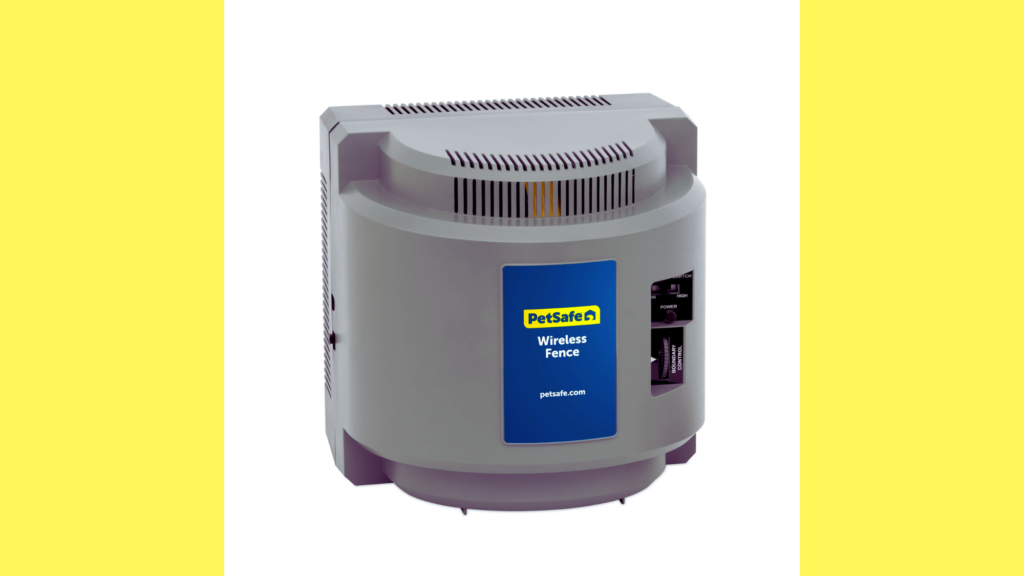
- PetSafe Wireless Fence Transmitter (PIF-300): Compatible with most existing wireless fence systems.
- PetSafe Stay & Play Wireless Transmitter: Provides a larger boundary range and improved signal stability.
- Upgraded GPS-Based Containment Systems: If you’re dealing with ongoing interference, a GPS fence might be a better solution.
Learn What’s the ideal collar size for a Rottweiler? by following this detailed guide to ensure a perfect fit for your dog’s comfort and safety.
3. Preventative Maintenance for Long-Term Performance
To prevent future transmitter failures, regular maintenance is essential. Here are the best practices for keeping your PetSafe system in top condition.
✔ Protecting Against Power Surges
Power surges are one of the leading causes of transmitter failure. A single electrical spike can fry internal components, making the system unusable.
🔧 Best Practices:
- Always plug the transmitter into a surge protector instead of directly into a wall outlet.
- If a storm is approaching, unplug the system to prevent damage.
- Consider using a battery backup system if you live in an area with frequent power outages.
✔ Keeping the Transmitter Clean and Dust-Free
Over time, dust accumulation can interfere with the transmitter’s ventilation, causing it to overheat.
🔧 Cleaning Tips:
- Wipe the transmitter with a dry microfiber cloth once a month.
- Use compressed air to remove dust from vents and ports.
- Keep the unit in a dry, clean environment, away from excessive humidity.
✔ Replacing Worn-Out Components on Time
Certain parts of the PetSafe system wear out over time and should be replaced before they cause a system failure.
🔧 What to Replace & How Often:
- Power adapter – Every 2-3 years, or sooner if showing signs of damage.
- Receiver collar battery – Every 3-6 months, depending on usage.
- Transmitter unit – Every 5-7 years, or if experiencing repeated failures.
4. Alternative Solutions if Problems Persist
If your PetSafe transmitter keeps failing, you may need to consider alternative pet containment solutions.
✔ Upgrading to a Newer PetSafe System
Newer wireless fence models offer stronger signals, better range, and improved interference protection.
🔎 Best Upgraded Models:
- PetSafe Stay & Play Compact Wireless Fence – Offers better reliability and a larger containment area.
- PetSafe YardMax Rechargeable In-Ground Fence – Uses a wired system for more consistent performance.
- SpotOn GPS Dog Fence – Uses GPS technology to eliminate boundary inconsistencies.
✔ Switching to a Wired Fence for More Stability
If you frequently experience signal interference or boundary inconsistencies, a wired in-ground fence may be a better option.
✅ Pros of a Wired Fence:
- More reliable and consistent than wireless systems.
- No issues with metal interference or signal fluctuations.
- Works better in hilly or wooded areas where wireless signals struggle.

🔴 Cons of a Wired Fence:
- Requires digging and installation, which takes more time.
- Less portable than a wireless system.
✔ Using a GPS-Based Containment System
If you need maximum flexibility and reliability, a GPS dog fence may be the best choice.
✅ Pros of GPS Fences:
- No need for transmitters or wires.
- Works well on large properties with irregular boundaries.
- Portable and easy to set up anywhere.
🔴 Cons of GPS Fences:
- Requires strong satellite signals for accuracy.
- More expensive than traditional PetSafe systems.
Final Thoughts: Getting Your PetSafe Transmitter Working Again
A non-working PetSafe transmitter can be frustrating, but most issues can be resolved with proper troubleshooting. Whether it’s a power supply issue, signal interference, or a malfunctioning unit, identifying the root cause will help you fix the problem quickly.
✔ Start by checking power connections and settings.
✔ Eliminate interference from metal objects and electronics.
✔ Test the collar and boundary regularly.
✔ If all else fails, contact PetSafe support for further assistance.
Hope so, now you know So, why is my petsafe transmitter not working? By following these step-by-step solutions, you can ensure your wireless fence system keeps working efficiently, giving your pet the freedom to roam safely while staying within the set boundaries.
To decide whether a collar or harness is best for your Dachshund, check out this helpful guide on Which is better for a Dachshund: a collar or harness?.

